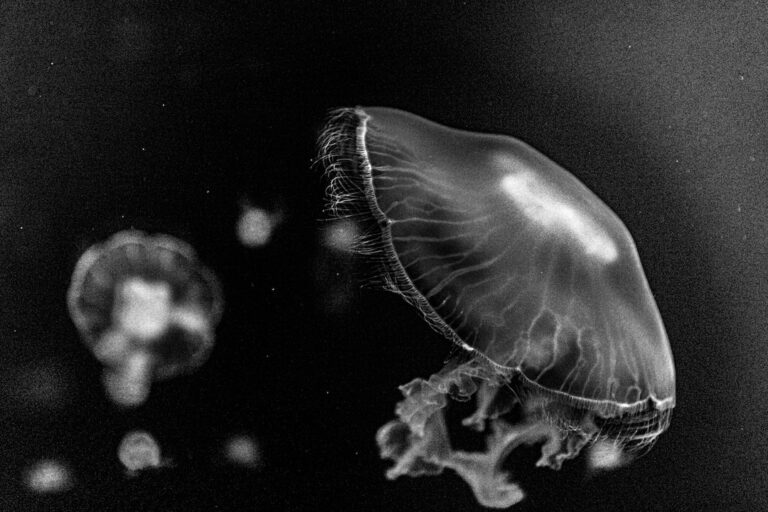Are Turtles Affectionate?
Turtles are fascinating creatures that have captured the hearts of many pet owners around the world. While they may not be known for their overt displays of affection like dogs or cats, turtles are capable of forming strong bonds with their owners. Understanding turtle affection is important for both the well-being of the turtle and the satisfaction of the owner. In this article, we will explore the surprising truth about turtle affection, whether turtles have emotions, the different types of turtles and their affectionate traits, how to tell if your turtle is showing affection, the importance of bonding with your pet turtle, whether turtles can recognize their owners, the role of touch in turtle affection, the benefits of affectionate interaction for your turtle’s health and happiness, common misconceptions about turtle affection, tips for building a strong relationship with your turtle, and the overall importance of understanding turtle affection.
Table of Contents
The Surprising Truth About Turtle Affection: What Science Says
Scientific studies on turtle behavior have revealed some surprising findings about how turtles show affection. While turtles may not exhibit affection in the same way as mammals, they do display behaviors that indicate a bond with their owners. One study conducted by researchers at the University of Vienna found that turtles can recognize their owners and show signs of excitement when they see them. The study involved placing a turtle in a tank with two different people, one being the owner. The researchers found that the turtles consistently showed more interest and approached their owners more often than the other person.
Another study conducted by scientists at Kyoto University in Japan found that turtles can form social bonds with each other and show signs of distress when separated from their preferred companions. The researchers observed red-eared slider turtles and found that they spent more time together when given the choice and showed signs of distress when separated. This suggests that turtles are capable of forming social bonds and experiencing some level of attachment.
Do Turtles Have Emotions? Understanding Their Behavior
The question of whether turtles have emotions is a complex one. While turtles may not experience emotions in the same way as humans, they do exhibit behaviors that indicate some level of emotional response. For example, turtles can display signs of happiness, such as swimming energetically or basking in the sun. They can also show signs of fear or stress, such as hiding in their shells or retreating to a safe place.
Turtles also display behaviors that indicate a level of attachment to their owners. They may swim towards their owners when they enter the room, follow them around the tank, or even come to the surface to greet them. These behaviors suggest that turtles can form emotional bonds with their owners and experience some level of affection.
The Different Types of Turtles and Their Affectionate Traits
There are many different types of turtles, each with their own unique affectionate traits. For example, red-eared slider turtles are known for their social nature and ability to form strong bonds with their owners. They are often seen swimming towards their owners and eagerly interacting with them.
Box turtles, on the other hand, are known for their gentle nature and willingness to be handled. They often enjoy being petted and will come to their owners for attention. Painted turtles are also known for their friendly nature and can become quite attached to their owners.
How to Tell If Your Turtle is Showing Affection
Recognizing signs of affection in your turtle can be challenging, as they may not exhibit the same behaviors as more traditional pets like dogs or cats. However, there are some common behaviors that indicate affection in turtles. For example, if your turtle swims towards you when you enter the room or follows you around the tank, this is a sign that they are happy to see you and enjoy your presence.
Another sign of affection is if your turtle comes to the surface to greet you when you approach the tank. This behavior indicates that they recognize you and are excited to interact with you. Additionally, if your turtle allows you to handle them without retracting into their shell or shows signs of relaxation when you pet them, this is a clear indication of affection.
The Importance of Bonding with Your Pet Turtle
Bonding with your pet turtle is important for both you and your pet. For the turtle, a strong bond with their owner can provide a sense of security and well-being. It can also help to reduce stress and anxiety, as turtles are social creatures that thrive on interaction.
For the owner, bonding with a pet turtle can be a rewarding experience that brings joy and fulfillment. It can also help to deepen the connection between owner and pet, leading to a more enriching and satisfying relationship.
Can Turtles Recognize Their Owners? The Bonding Process
Turtles are capable of recognizing their owners and forming bonds with them. This recognition is often based on visual cues, such as the owner’s appearance or movements. Turtles have been shown to display signs of excitement when they see their owners, such as swimming towards them or coming to the surface to greet them.
The bonding process between a turtle and its owner can take time and patience. It is important to spend regular, consistent time with your turtle to build trust and familiarity. This can be done through activities such as feeding, handling, and interacting with your turtle in a positive and gentle manner.
The Role of Touch in Turtle Affection: Petting and Handling
Touch plays an important role in turtle affection. Many turtles enjoy being petted and handled by their owners, as it provides them with physical contact and stimulation. When petting or handling your turtle, it is important to do so gently and in a way that is comfortable for them.
Some turtles may prefer to be touched on certain areas of their body, such as their head or shell. It is important to observe your turtle’s body language and respond accordingly. If your turtle shows signs of discomfort or tries to retreat into their shell, it is best to stop petting or handling them and give them space.
The Benefits of Affectionate Interaction for Your Turtle’s Health and Happiness
Affectionate interaction with your turtle can have numerous benefits for their health and happiness. Regular interaction with their owner can help to reduce stress and anxiety, as well as provide mental stimulation. It can also help to prevent boredom and promote overall well-being.
Affectionate interaction can also improve your turtle’s quality of life by providing them with a sense of security and companionship. Turtles are social creatures that thrive on interaction, and having a strong bond with their owner can fulfill this need.
Common Misconceptions About Turtle Affection: Debunking Myths
There are several common misconceptions about turtle affection that need to be debunked. One myth is that turtles are cold and unfeeling creatures that do not form emotional bonds with their owners. As we have discussed, turtles are capable of forming strong bonds with their owners and displaying signs of affection.
Another myth is that turtles do not enjoy being handled or petted. While it is true that not all turtles enjoy being handled, many do enjoy physical contact with their owners. It is important to observe your turtle’s body language and respond accordingly to ensure their comfort and well-being.
Tips for Building a Strong Relationship with Your Turtle
Building a strong relationship with your turtle takes time and patience. Here are some tips to help you build a strong bond with your pet:
1. Spend regular, consistent time with your turtle: Turtles thrive on routine, so it is important to spend regular, consistent time with them. This can include feeding, handling, and interacting with your turtle in a positive and gentle manner.
2. Be patient and observant: Turtles have their own unique personalities and preferences, so it is important to be patient and observant. Take the time to learn about your turtle’s likes and dislikes, and respond accordingly.
3. Provide a stimulating environment: Turtles are curious creatures that enjoy exploring their environment. Provide them with a stimulating environment that includes hiding spots, toys, and opportunities for exploration.
4. Offer treats and rewards: Turtles can be motivated by food, so offering treats and rewards can help to reinforce positive behaviors and strengthen the bond between you and your turtle.
Understanding turtle affection is important for both the well-being of the turtle and the satisfaction of the owner. While turtles may not exhibit affection in the same way as more traditional pets like dogs or cats, they are capable of forming strong bonds with their owners. By recognizing signs of affection, providing affectionate interaction, and building a strong relationship with your turtle, you can enhance their health and happiness, as well as deepen the connection between you and your pet.
If you’re interested in learning more about reptiles, you might want to check out this article on Are Turtles Cannibals? It explores the intriguing behavior of turtles and whether they have a tendency to eat their own kind. It’s a fascinating read for anyone curious about the habits and behaviors of these ancient creatures.







